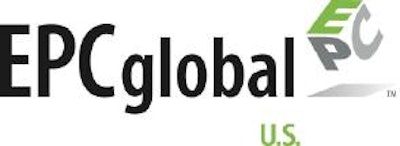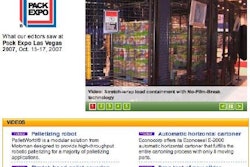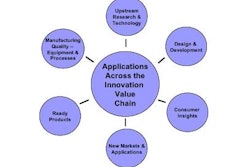
Packaging Insights: Please bring our readers up to speed on packaging-related RFID trends and developments.
Hutchinson: There is a lot going on in the EPCglobal community. First
and foremost, we're seeing a sea change going from the pilot stage of
implementation into “real world” implementation. Consumer packaged
goods manufacturers and pharmaceutical companies ask, "How do I
operationalize the use of these technologies in my industry, in my
company?"
And packaging is one of the first things these companies think about.
We are moving past the point where we’re just slapping a tag on the
side of a box and hoping that it works. We need to get more creative in
incorporating these technologies into the way we do packaging.
For example, relating to the challenges of UHF in a liquid and metal
environment, one of the things that Proctor & Gamble has done is to
change the package design for its Gillette Fusion razors so that the
packaging itself could become more RF-friendly. It did this by
isolating the metallic materials and adding more air gaps in different
locations.
We're going to start to see that as a trend as more
RFID-enabled products make their way into the supply chain. We're going
to see additional explorations, particularly from the CPG and
pharmaceutical companies, of creative things they can do to incorporate
RFID directly into their packaging.
I think it will also be true for integration within corrugates or
case-level applications—we’re getting to the volumes where case-level
RFID starts to make sense. That will also be true at the item level,
particularly for pharmaceuticals.
PI: What resources are available at EPCglobal?
Hutchinson: We have some tremendous resources available at EPCglobal,
not only through our staff, but also through our Web site. All of the
standards that EPCglobal has ratified are publicly available. If you
want to know what is going on, or want to learn a little bit more about
a particular standard, a great way to learn is to download it. We also
maintain a North America knowledge base of around 1,000 documents, and
the majority of those are available for anyone who wants to download
them.
PI: What do you see as the biggest challenges heading into 2008?
Hutchinson: The challenges fall in a couple of directions. First and
foremost is scale. When does it start to make sense to incorporate
these processes as a main way of doing business, rather than just
tagging a few stock-keeping units? Surprisingly, that tipping point is
relatively low for some large companies. The number that I’ve heard
recently is less than 40% of the SKUs, which makes it very feasible for
RFID to become part of the regular manufacturing process.
Challenge number two, while the Gen 2 technology has really improved
the writability and readability of tags, we still have some challenges
in some very specific areas, particularly around liquids and metal. We
continue to work as a community, including the end users, the packaging
folks, and the solution providers, to find more and creative ways to
overcome those challenges.
PI: The advancement from Gen 1 to Gen 2 RFID has been pretty dramatic, but what's next?
Hutchinson: Gen 2 was designed to be an extensible platform. Within
the next six months, we will see some enhancements and extensions to
the UHF Gen 2 protocol. For certain applications, we’re also looking
at a high-frequency [HF] protocol that is consistent with UHF, so that
it gives more options to users who want to mix those two technologies
in their enterprise, but still wanted to be consistent in the way they
receive data, the kind of data they receive, and how they use it. For
us, it’s all about standardizing and providing users with as many
enablers as they’re going to need.
PI: What else can you point to for packagers?
Hutchinson: We are starting to work in a more organized way with the
packaging community in that we are pulling together an interest group
within EPCglobal specifically around packaging. Having the packaging
suppliers working directly with the end-user companies and our very
sharp technical people will open up some opportunities for us to share
requirements and develop creative packaging solutions to enable these
technologies to grow faster.
For more information visit, www.epcglobalinc.org or www.epcglobalna.org.
To listen to the complete Podcast of the entire interview, see www.packworld.com/view-24077.
























